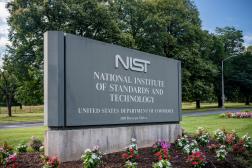Agencies: Budgets strained by small business research

Agencies’ budgets for extramural research are wavering amid increasing requirements to set aside funding for small business tech and innovation programs.
The percentage of funding agencies must put toward the Small Business Innovation Research and Small Business Technology Transfer programs continues to increase annually while overall budget increases are minimal, hurting their ability to fund research and development in other areas, officials said in a House Research and Technology subcommittee hearing Thursday.
The SBIR and STTR programs are authorized for another year under a 2011 legislation. A proposed House reauthorization bill would continue to increase the set-aside percentage every year.
Leaders from the National Science Foundation, the National Institutes of Health and the Energy Department appealed to subcommittee members to consider making the set-aside percentages for the programs static in the proposed bill and increase the overall extramural research budgets to grow the programs instead.
The annual increase in the set-aside percentages have impacted core research project funding at NSF, said Dr. Pramod Khargonekar, assistant director for the directorate of engineering at NSF.
“We do not see annual increases in the set-asides for these programs as justified, especially at the cost of others, when the overall budget of the agency is flat,” Khargonekar said in his prepared statement.
Officials from the agencies represented at the hearing said increasing the overall extramural research and development budget would alleviate problems if set-aside rates were kept at the fiscal year 2017 levels.
Rep. Katherine Clark, D-Mass., agreed with the idea: “I think we need to increase the pie, not reallocate the slices.”
Many large companies in cybersecurity, IT and biomedical research — like Symantec and Qualcomm — received SBIR funding in their early years.
[Read more: The man behind SBA’s $6.5B annual give away for startups]
Officials and subcommittee members also touched on the issue of using the programs to support more women and minorities in research.
The SBIR and STTR programs are meant to encourage women, minorities and those in economically or socially disadvantaged situations to do research and develop small businesses.
Zyrobotics — founded in 2013 by a woman, Ayanna Howard — received SBIR funding, for example. The company creates products that help children with limited mobility use mobile devices and learn more about STEM.
But companies like Howard’s are more of the exception, not the rule.
“I’m concerned that a lot of that brainpower is not being utilized,” said Rep. Eddie Bernice Johnson, D-Texas.
In response, Khargonekar said “progress has been quite slow.”
NSF has been trying to improve diversity through initiatives like NSF Includes, which works on getting all sectors of society involved in STEM, Khargonekar said. He also said the NSF is using part of its administrative budget to do outreach to these sectors.
SBIR funding is normally divided into Phase I, Phase II and Phase III, but some agencies have started a Phase 0 program to encourage more innovation before companies are ready for Phase I. Officials said using the Phase 0 program allows the agencies to reach out to more women- and minority-owned businesses and help them in early stages.
“The Phase 0 programs are also an opportunity to bring in previously-disadvantaged groups into the fold and increase the likelihood of their success,” said Dr. Michael Lauer, deputy director for extramural research at NIH.
DOE’s Phase 0 Assistance Program even includes help with preparing a proposal and small business training. This program also tries to target states with fewer SBIR and STTR submissions to the DOE, and women and minority-owned businesses.
“It’s a huge challenge in the physical sciences,” said Dr. Patricia Dehmer, deputy director for science programs in DOE’s Office of Science.






